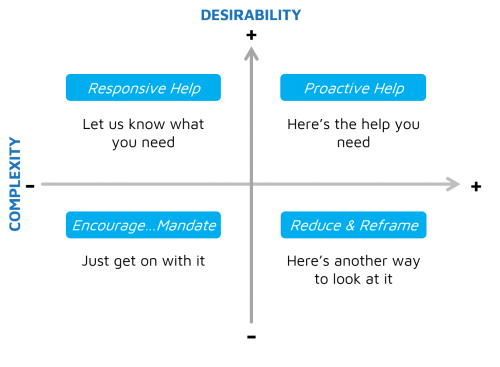Change is HARD!
Change is RELENTLESS!
The pace of change is ACCELERATING!
We hear these messages all of the time, while glossing over the following:
- The rate of change has been high for a long time. Nothing new here.
- We are built to adapt.
- We incorporate change into our lives all the time with minimal disruption.
Change is not a doom and gloom topic. If we didn’t do it, we would still be using rotary phones, my couch would be orange floral with a plastic cover, and I wouldn’t be able to pay my food bill…
Finishing my cheeseburger egg rolls at a diner in Adelaide, Australia, I reached for my wallet to discover only my phone. Signalling the waiter, I asked if they accepted Apple Pay. Fortunately I had loaded my cards into my phone as a ‘just in case’ and with a bit of fumbling, made my first smartphone payment. Crisis averted. Adaptation to new form of payment complete!
If you reflect on the last 30 days, I guarantee you can come up with 100 ways you’ve adapted behavior, modified the way you do things in order to accommodate a change or integrate a useful learning.
Changing Your Mind
So, why is some change more difficult than others? Ask those who are experiencing the change:
1. How desirable is it?
2. How complex or difficult do you think it will be to adapt?
Desirability is the perception of whether the change is seen as good or bard for me. But this is not pure self-interest. People will get behind a good cause if they see the benefit for things they care about: customers, community, country. If the direction offers a sense of purpose, if your vision offers hope for the future, desirability will increase.
Complexity is assessed by determining how much a person will need to do, physically and emotionally, to adapt to the change. The greater the number of challenges to overcome along the way, the greater the potential to fail and look stupid in front of peers. As complexity increases, so does the potential for resistance. Complexity is assessed by considering:
- new skills required
- technical, procedural changes involved
- relationship changes
- shifts in decision-making power
- current emotional state

Using Apple Pay was low in complexity and highly desirable. I didn’t require any training. Moving people from the back office to the front office where they are in contact with customers is much more complex, and potentially undesirable. More active support is required.
The good news is that these dimensions are malleable: We can influence how people view change using the levers described in the Strategy Accelerator. Negative desirability can be flipped, and what seems complex and can be broken down into achievable components.
All changes are not created equal. Getting a fix on how they are perceived will give you greater insight into how to get everyone bought into the benefits and on board for the shift.
If you need help determining the impact of change and getting everyone moving in the same direction, let me know – this is where I shine brightest!
Thoughtfully yours,
Jeff Skipper



